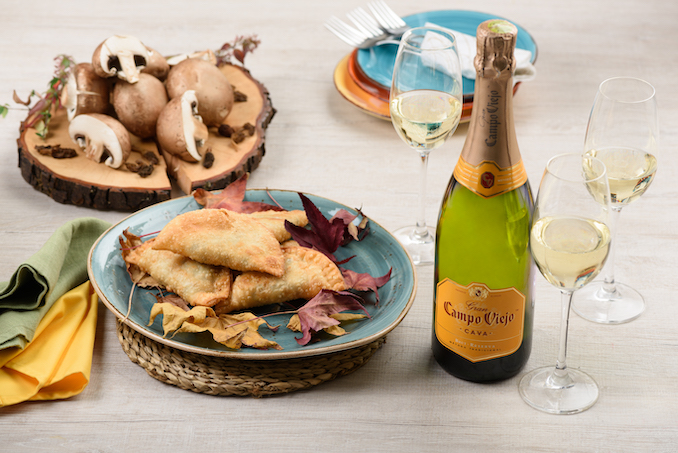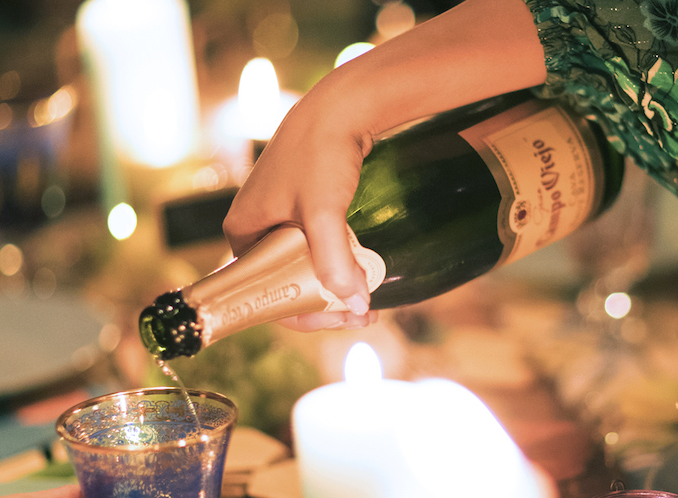Campo Viejo Cava Brut Reserva is dry and well-rounded in taste with soft and fruity flavours and fine bubbles, perfect for any occasion.
A regular bottle of cava is aged for around 9 months, but Campo Viejo’s Cava is aged for 15 months for additional flavour and texture, which is the same minimum period as Champagne. Campo Viejo Cava Brut Reserva is now available in Australia, meeting Aussies growing desire for the taste of Cava!
What is Cava?
Cava is a Spanish sparkling wine that is pale yellow in colour with a golden hue and fine head of bubbles. It is dry and well-rounded in taste with soft and fruity flavours, perfect for any occasion.

Where did it originate?
Cava originated In the Catalunya region of Spain. Much like with Champagne, a bottle cannot hold the name Cava unless it is from Spain.
How can you choose a good bottle? What should you be looking for?
A good bottle of Cava is all in the aging with most regular Cava’s aged for 9 months. Campo Viejo Cava Brut Reserva is aged for at least for 15 months for additional flavour and texture, which is the same minimum period as Champagne.
What food does it pair well with?
Cava’s soft and fruity notes lends itself to a very diverse pallet. Campo Viejo Cava Brut Reserva has flavours of fresh apples and aromas of floral peach and pear. These flavours perfectly pair with a wide variety of dishes including fish, rice and white meat. It is also best enjoyed as an aperitif, the best way to start any dinner party or celebration!
How does it differ from Prosecco?
Cava is made using the same method (traditional method with second fermentation in the bottle) as Champagne, but with different grape varieties (Macabeo, Parellado, Xarel-lo instead of Chardonnay, Pinot Noir and Pinot Meunier) and of course, from a different origin.
Prosecco is made by a different method – the Charmat method – where the second fermentation to make the bubbles occurs in a pressurised tank not in the bottle. Prosecco is also made from the grape variety, Glera, and is from Italy, and is often sweeter in style than Cava, although dry Prosecco is also made.
Is it gaining popularity here in Australia?
Australians seem to love sparkling wine and you make a lot of great sparkling wines here, mostly from Chardonnay and Pinot Noir. But from an international perspective, Champagne had been enjoying growth in recent years but things are changing rapidly. Cava is now growing at a massive 64%* in value in Australia, while Prosecco is growing at 33%*. I think Australians are loving Cava because it’s the best of both worlds – made by the traditional method like Champagne, but as easy to drink as Prosecco!
(Source: *IRI Temple, Australian Liquor MAT 11/08/2019, Value growth)
Why would you say it’s good to understand the difference between each?
Cava, Champagne and Prosecco are all very different in styles and origin so it’s good to understand the difference, as different people have different preferences. Or one might be good for one occasion but another style for another. For example, I love Champagne to celebrate a special occasion, but Cava is the perfect sparkling wine to enjoy every week – just to relax with friends and celebrate life and being in the moment. – Global Brand Ambassador Frederico Lleonart.
For each of the below answer: what is it / how is it made / how does it taste / what would you recommend pairing it with?
- Cava – Spanish sparkling wine / bottle fermented / soft and fruity with hints of green apple/ perfect for brunch
- Champagne – French sparkling wine / bottle fermented / aperitif, soft cheese
- Prosecco – Italian sparkling wine / tank fermented/ slightly sweet / fresh fruits

